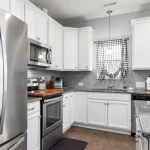Buying a home is often the largest financial step most people will ever take, and protecting it properly requires more than just locking the doors at night. Homeowners insurance is designed to safeguard both your house and your personal finances when unexpected events strike. But how much coverage is truly enough? The answer depends on the type of policy you choose, the value of your home, and the risks you face.
Common Types of Policies
Not all homeowners insurance is created equal. Policies are grouped into categories, each offering a different level of protection:
- HO-1 (Basic Form): Minimal protection, with no liability or personal property coverage.
- HO-2 (Broad Form): A step above HO-1, covering more risks but still fairly limited.
- HO-3 (Special Form): The most common option, offering balanced coverage.
- HO-5 (Comprehensive Form): The most robust, with wider protection for both dwelling and personal property.
- HO-8 (Modified Form): Designed for older homes that are difficult or costly to replace.
Coverage Limits You Should Expect
Most policies include several coverage categories, often tied to your dwelling coverage:
- Dwelling: Pays to repair or rebuild your home. Insurers typically require at least 80% of replacement cost, though some ask for 100%.
- Other Structures: Covers things like detached garages or sheds, usually capped at about 10% of dwelling coverage.
- Personal Property: Generally 50% of your dwelling limit, protecting belongings like furniture, clothes, and electronics.
- Loss of Use: Helps with living expenses if you can’t stay in your home, often around 20–30% of dwelling coverage.
- Personal Liability: Protects you if someone is injured on your property or you damage someone else’s property.
- Medical Payments: Covers injuries to guests, typically between $1,000 and $5,000.
Deciding on Dwelling and Property Coverage
Dwelling coverage should match the cost to rebuild your home—not the market value, which includes land. For example, if rebuilding your house would cost $200,000, you’ll want coverage at least at that level, if not slightly higher.
For personal belongings, 50% of your dwelling coverage is standard, but you may need more if you own high-value items like jewelry, art, or collectibles. In those cases, a scheduled property endorsement can provide added protection. It’s wise to create a home inventory so you know exactly what you own and how much it’s worth.
How Much Liability Coverage Do You Need?
Liability coverage varies widely and depends on your risk profile. If you own a pool, host frequent guests, or simply want peace of mind, it may be worth increasing your limit. While standard policies offer a baseline amount, some insurers provide much higher limits. For those who need even more, an umbrella policy can extend liability protection by $1 million or more.
Replacement Cost vs. Actual Cash Value
How your insurer pays out claims matters. With actual cash value, you’ll only receive the depreciated worth of an item—often much less than it would cost to replace. With replacement cost coverage, the insurer pays to repair or replace your home and belongings at today’s prices. Extended replacement cost endorsements can go even further, adding 10–25% on top of your dwelling coverage to offset rising construction costs.
Extra Coverage Options
Homeowners insurance isn’t just about your house. Depending on your situation, you may also want:
- Identity theft protection
- Coverage for home-based businesses
- Sewer or water backup protection
- Insurance for daycare operations within your home
Natural disasters are another area to pay attention to. Standard policies often exclude floods and earthquakes, and wildfire coverage may vary by state. If you live in an at-risk area, you may need separate policies or special endorsements.
Choosing the Right Policy
The right level of coverage balances cost with protection. Cutting corners may save on premiums now, but could leave you exposed to significant financial loss later. Think about the full cost of rebuilding your home, replacing your belongings, and covering potential liability. Then compare policies from multiple providers to find the one that offers both value and peace of mind.
Your home is likely your greatest asset—making sure it’s fully protected isn’t just smart, it’s essential.











